We put the Google Pixel 7a through our rigorous DXOMARK Camera test suite to measure its performance in photo, video, and zoom quality from an end-user perspective. This article breaks down how the device fared in a variety of tests and several common use cases and is intended to highlight the most important results of our testing with an extract of the captured data.
Overview
Key camera specifications:
- Primary: 64MP 1/1.73″ sensor, 0.8 μm pixels, 80° field of view, f/1.89
- Ultra-wide: 13MP sensor, 1.12 μm pixels, 120° field of view equivalent, f/2.2-aperture lens
Scoring
Sub-scores and attributes included in the calculations of the global score.
Google Pixel 7a


Use cases & Conditions
Use case scores indicate the product performance in specific situations. They are not included in the overall score calculations.
Outdoor
Photos & videos shot in bright light conditions (≥1000 lux)
Indoor
Photos & videos shot in good lighting conditions (≥100lux)
Lowlight
Photos & videos shot in low lighting conditions (<100 lux)
Friends & Family
Portrait and group photo & videos
Pros
- Natural colors and white balance in photo
- Effective video stabilization
- Good exposure in both photo and video
- Fast and stable autofocus
- Accurate depth estimation in bokeh mode
- Wide field of view for the class on ultra-wide camera
Cons
- Loss of detail in video
- Underexposed video in difficult portrait scenes
- Pattern noise indoors and in low light
- Limited depth of field
- Unstable white balance in bright light and indoor video
- Ringing artifacts in video, fusion artifacts in photo
The Google Pixel 7a delivered an excellent performance for its class in our DXOMARK Camera tests, and showed some improvement over its predecessor the Pixel 6a. The Pixel 7a features less-sophisticated hardware than the Pixel 7 Pro and lacks a dedicated tele camera, like the Pixel 7, but it uses the same Google Tensor G2 chipset as the other Pixel 7-series devices.
Overall, image results were pretty close to the Pixel 7, especially in the photo and zoom categories, but the 7a did not quite match the more expensive model in terms of video detail. In still imaging our testers were particularly pleased by the 7a’s color and skin tone rendering. When zooming, the 7a did well at the ultra-wide end of the zoom range, but the lack of a dedicated tele lens meant that tele zoom image detail wasn’t quite on the same level as some competitors, such as the Xiaomi 13. In video mode, the Pixel 7a performed generally well in most conditions, but had some weaknesses in terms of color and detail rendering.
Despite some minor niggles, the Google Pixel 7a is an easy recommendation to anyone shopping for great camera performance in the High End segment.
In our Friend & Family use case tests, the Pixel 7a benefited from its nice color rendering and skin tones as well as good target exposure in most conditions. On the downside, the slightly limited depth of field means it’s not the best pick for group portraits with subjects in different planes.
In dimly lit environments, the camera’s ability to capture detail and color was on par with more expensive smartphones. This was largely due to the Pixel 7a’s large image sensor and wide aperture, which allow it to capture a lot of light and keep image noise at bay.
Test summary
About DXOMARK Camera tests: DXOMARK’s Camera evaluations take place in laboratories and in real-world situations using a wide variety of subjects. The scores rely on objective tests for which the results are calculated directly by measurement software on our laboratory setups, and on perceptual tests in which a sophisticated set of metrics allow a panel of image experts to compare aspects of image quality that require human judgment. Testing a smartphone involves a team of engineers and technicians for about a week. Photo, Zoom, and Video quality are scored separately and then combined into an Overall score for comparison among the cameras in different devices. For more information about the DXOMARK Camera protocol, click here. More details on smartphone camera scores are available here. The following section gathers key elements of DXOMARK’s exhaustive tests and analyses. Full performance evaluations are available upon request. Please contact us on how to receive a full report.
Photo
Google Pixel 7a
169
For scoring and analysis, DXOMARK engineers capture and evaluate more than 2,600 test images both in controlled lab environments and in outdoor, indoor and low-light natural scenes, using the camera’s default settings. The photo protocol is designed to take into account the main use cases and is based on typical shooting scenarios, such as portraits, family, and landscape photography. The evaluation is performed by visually inspecting images against a reference of natural scenes, and by running objective measurements on images of charts captured in the lab under different lighting conditions from 1 to 1,000+ lux and color temperatures from 2,300K to 6,500K.
In our tests, the Google Pixel 7a delivered an excellent performance for still images, ranking second in its price segment, just behind its cousin Google Pixel 7. Our experts particularly liked the camera’s color and skin tone rendering. Exposure was good in most conditions as well, with a pretty wide dynamic range resulting in good detail in the highlight and shadow areas of the frame. The autofocus reacted quickly and worked accurately but a shallow depth of field meant that objects in front of or behind the main subject in the scene were out of focus.
Images showed high levels of detail in most light conditions but could not quite match the Pixel 7 and Pixel 7 Pro. Compared to the other 7-series devices, we also observed higher noise levels when taking pictures indoors or in low light.

Exposure
Google Pixel 7a
130
Exposure is one of the key attributes for technically good pictures. The main attribute evaluated is the brightness of the main subject through various use cases such as landscape, portrait, or still life. Other factors evaluated are the contrast and the dynamic range, eg. the ability to render visible details in both bright and dark areas of the image. Repeatability is also important because it demonstrates the camera's ability to provide the same rendering when shooting several images of the same scene.
The Google Pixel 7a delivered good exposure in most test conditions but our experts did observe occasional underexposure in difficult portrait scenes. The camera’s dynamic range was fairly wide and on par with most direct competitors in the segment.

Color
Google Pixel 7a
130
Color is one of the key attributes for technically good pictures. The image quality attributes analyzed are skin-tone rendering, white balance, color shading, and repeatability. For color and skin tone rendering, we penalize unnatural colors but we respect a manufacturer's choice of color signature.
Color rendering is one of the Google Pixel 7 series’ strengths and the Pixel 7a was no exception, thanks to a neutral white balance, nice skin tones and beautiful colors in most test conditions.

Autofocus
Google Pixel 7a
125
Autofocus tests concentrate on focus accuracy, focus repeatability, shooting time delay, and depth of field. Shooting delay is the difference between the time the user presses the capture button and the time the image is actually taken. It includes focusing speed and the capability of the device to capture images at the right time, what is called 'zero shutter lag' capability. Even if a shallow depth of field can be pleasant for a single subject portrait or close-up shot, it can also be a problem in some specific conditions such as group portraits; Both situations are tested. Focus accuracy is also evaluated in all the real-life images taken, from infinity to close-up objects and in low light to outdoor conditions.
The Google Pixel 7a autofocus system was fast and accurate in most conditions, allowing for quick and sharp capture of subjects, even in challenging light conditions.

Texture
Google Pixel 7a
125
Texture tests analyze the level of details and the texture of subjects in the images taken in the lab as well as in real-life scenarios. For natural shots, particular attention is paid to the level of details in the bright and dark areas of the image. Objective measurements are performed on chart images taken in various lighting conditions from 1 to 1000 lux and different kinds of dynamic range conditions. The charts used are the proprietary DXOMARK chart (DMC) and the Dead Leaves chart.
The Google Pixel 7a captured high levels of detail, in some test scenes higher than its direct competitors, even in difficult light conditions. However, a shallow depth of field meant that scene elements in front of or behind the main subject were less sharp.

Noise
Google Pixel 7a
117
Noise tests analyze various attributes of noise such as intensity, chromaticity, grain, structure on real-life images as well as images of charts taken in the lab. For natural images, particular attention is paid to the noise on faces, landscapes, but also on dark areas and high dynamic range conditions. Noise on moving objects is also evaluated on natural images. Objective measurements are performed on images of charts taken in various conditions from 1 to 1000 lux and different kinds of dynamic range conditions. The chart used is the Dead Leaves chart and the standardized measurement such as Visual Noise derived from ISO 15739.
The Google Pixel 7a managed to keep image noise levels well under control when shooting in bright light. When taking pictures indoors or in low light, some noise became noticeable, but the Pixel was still doing better in dim conditions than most of its direct rivals.

Artifacts
Google Pixel 7a
82
The artifacts evaluation looks at lens shading, chromatic aberrations, geometrical distortion, edges ringing, halos, ghosting, quantization, unexpected color hue shifts, among others type of possible unnatural effects on photos. The more severe and the more frequent the artifact, the higher the point deduction on the score. The main artifacts observed and corresponding point loss are listed below.
In our tests, we found a range of unwanted artifacts in the Pixel 7a’s image output, but fusion artifacts and ghosting were the most noticeable ones.
Bokeh
Google Pixel 7a
85
Bokeh is tested in one dedicated mode, usually portrait or aperture mode, and analyzed by visually inspecting all the images captured in the lab and in natural conditions. The goal is to reproduce portrait photography comparable to one taken with a DLSR and a wide aperture. The main image quality attributes paid attention to are depth estimation, artifacts, blur gradient, and the shape of the bokeh blur spotlights. Portrait image quality attributes (exposure, color, texture) are also taken into account.
The Pixel 7a’s portrait mode managed to combine the camera’s pleasant skin tone rendering with accurate depth estimation and subject isolation. The result was a nice bokeh effect with a natural blur gradient, making the Pixel a decent choice for shooting DSLR-style portrait images.
Preview
Google Pixel 7a
93
Preview tests analyze the image quality of the camera app's preview of the image, with particular attention paid to the difference between the capture and the preview, especially regarding dynamic range and the application of the bokeh effect. Also evaluated is the smoothness of the exposure, color and focus adaptation when zooming from the minimal to the maximal zoom factor available. The preview frame rate is measured using the LED Universal Timer.
In our tests, the Google Pixel 7a’s image preview on the display was generally reliable, with a similar exposure and dynamic range to the final capture. However, in portrait mode the simulated bokeh effect was not displayed in the preview.
Zoom
Google Pixel 7a
169
DXOMARK engineers capture and evaluate over 400 test images in controlled lab environments and in outdoor, indoor, and low-light natural scenes, using the camera’s default settings and pinch zoom at various zoom factors from ultra wide to very long-range zoom. The evaluation is performed by visually inspecting the images against a reference of natural scenes, and by running objective measurements of chart mages captured in the lab under different conditions from 20 to 1000 lux and color temperatures from 2300K to 6500K.
The Google Pixel 7a comes with a dedicated ultra-wide camera, with a very wide field of view for its class, allowing the photographer to squeeze a lot of scene into the frame. In our tests the ultra-wide camera produced accurate exposures and nice color. The trade-off between texture and noise was good, too. The lack of a dedicated tele lens meant that there was a noticeable loss of detail at medium range and longer tele settings when zooming in, though.
Video Zoom
In terms of video zoom, the Pixel 7a has been slightly improved over its predecessor but the difference is small. When using the video zoom feature, there was still a noticeable loss of detail which, given the lack of a dedicated tele lens, was to be expected.

Wide
Google Pixel 7a
122
These tests analyze the performance of the ultra-wide camera at several focal lengths from 12 mm to 20 mm. All image quality attributes are evaluated, with particular attention paid to such artifacts as chromatic aberrations, lens softness, and distortion. Pictures below are an extract of tested scenes.
The Pixel’s ultra-wide camera offers a 13.7mm equivalent focal length, allowing for the capture of a wide field of view. Overall, image results from the ultra-wide were noticeable better than on the Pixel 7, and the 7a also outperformed its direct rivals Xiaomi 13 and Apple iPhone 14. When shooting with the ultra-wide camera, exposure was accurate and stable. While dynamic range could be slightly limited in difficult lighting situations, it was still wider than on most rivals in the class. Color was generally nice, with a natural white balance, but in some bright light and indoor scenes a white balance cast could be noticeable. The ultra-wide camera also captured good detail. Generally only slight noise was visible, but it was amplified in the shadow regions of the frame by Google’s HDR processing. Unwanted image artifacts were well under control, though.

Tele
Google Pixel 7a
128
All image quality attributes are evaluated at focal lengths from approximately 40 mm to 300 mm, with particular attention paid to texture and detail. The score is derived from a number of objective measurements in the lab and perceptual analysis of real-life images.
When applying tele zoom, the camera captured fairly good detail at close range settings. However, without a dedicated tele lens a loss of detail was noticeable at medium and long range tele, as tele zoom is achieved by digital means only. Overall, tele performance was similar to the iPhone 14, but worse compared to the Xiaomi 13, which comes with a dedicated 75mm tele sensor module. Colors were accurate and exposure was generally good but our testers observed some underexposure in high-contrast scenes. We also noticed some image noise.
In this close range sample the level of detail was acceptable.
However, at long range a stronger loss of detail was noticeable than on the Xiaomi 13.
Video
Google Pixel 7a
159
DXOMARK engineers capture and evaluate more than 2.5 hours of video in controlled lab environments and in natural low-light, indoor and outdoor scenes, using the camera’s default settings. The evaluation consists of visually inspecting natural videos taken in various conditions and running objective measurements on videos of charts recorded in the lab under different conditions from 1 to 1000+ lux and color temperatures from 2,300K to 6,500K.
In video mode, the Google Pixel 7a was tested at 4K resolution and 30 frames per second. The device performed generally well in most conditions, but revealed some weaknesses in terms of color and detail rendering. The camera had a tendency to render color either dull or oversaturated, and the level of recorded detail was fairly low. On the plus side, video stabilization was effective, target exposure was generally accurate with wide dynamic range, and the autofocus was smooth.

Exposure
Google Pixel 7a
116
Exposure tests evaluate the brightness of the main subject and the dynamic range, eg. the ability to render visible details in both bright and dark areas of the image. Stability and temporal adaption of the exposure are also analyzed.
Target exposure was generally accurate in most test conditions, but on some occasions we observed a lack of contrast, especially in bright outdoor light. Our testers also noticed some slight exposure instabilities in bright light. Dynamic range was fairly wide.

Color
Google Pixel 7a
120
Image-quality color analysis looks at color rendering, skin-tone rendering, white balance, color shading, stability of the white balance and its adaption when light is changing.
In indoor conditions and low light the Pixel 7a’s color rendering left some room for improvement. Color saturation was either too high or too low, resulting in unnaturally red or orange skin tones in low light. White balance casts were well managed but some instabilities were sometimes noticeable, especially in areas of plain color, such as blue skies. These instabilities were generally only noticeable when the camera was moving during recording.

Autofocus
Google Pixel 7a
120
The camera’s video autofocus was generally smooth and stable. Slight stepping or focus failures could occur during scene changes under suboptimal light conditions, but the Google device did overall well in the video autofocus category.

Texture
Google Pixel 7a
118
Texture tests analyze the level of details and texture of the real-life videos as well as the videos of charts recorded in the lab. Natural videos recordings are visually evaluated, with particular attention paid to the level of details in the bright and areas as well as in the dark. Objective measurements are performed of images of charts taken in various conditions from 1 to 1000 lux. The charts used are the DXOMARK chart (DMC) and Dead Leaves chart.
In video mode, our testers found the Pixel 7a to struggle with detail preservation. Texture rendering was slightly below what we could see on the comparison devices across all light conditions. However, the difference was most noticeable at lower light levels.

Noise
Google Pixel 7a
120
Noise tests analyze various attributes of noise such as intensity, chromaticity, grain, structure, temporal aspects on real-life video recording as well as videos of charts taken in the lab. Natural videos are visually evaluated, with particular attention paid to the noise in the dark areas and high dynamic range conditions. Objective measurements are performed on the videos of charts recorded in various conditions from 1 to 1000 lux. The chart used is the DXOMARK visual noise chart.
The Google Pixel 7a did well at controlling noise in video mode and noise levels were low in most conditions. Some slight chroma noise could be visible in the sky in outdoor scenes as well as areas of plain color when recording indoors. Temporal and luminance noise were well controlled in bright light and under typical indoor conditions but became noticeable in low light.

Stabilization
Google Pixel 7a
119
Stabilization evaluation tests the ability of the device to stabilize footage thanks to software or hardware technologies such as OIS, EIS, or any others means. The evaluation looks at residual motion, smoothness, jello artifacts and residual motion blur on walk and run use cases in various lighting conditions. The video below is an extract from one of the tested scenes.
Video stabilization was very effective when holding the camera still while recording but some camera shake became noticeable when walking or running. Occasionally our testers also observed sharpness differences between frames, like in the sample clip below.

Artifacts
Google Pixel 7a
86
Artifacts are evaluated with MTF and ringing measurements on the SFR chart in the lab as well as frame-rate measurements using the LED Universal Timer. Natural videos are visually evaluated by paying particular attention to artifacts such as aliasing, quantization, blocking, and hue shift, among others. The more severe and the more frequent the artifact, the higher the point deduction from the score. The main artifacts and corresponding point loss are listed below.
Unwanted video artifacts were generally well managed on the Pixel 7a, but we saw some ringing, mostly outdoor and indoor conditions.
In addition, ghosting could be spotted on moving elements in low light scenes.


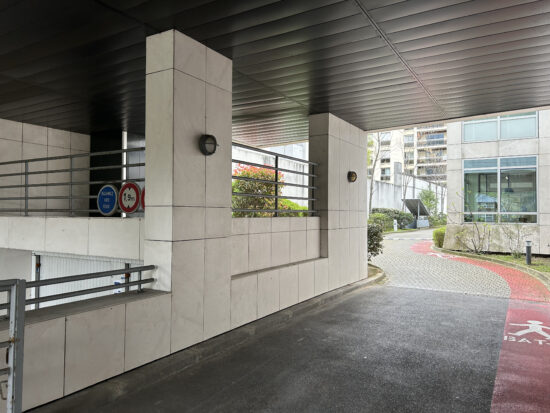

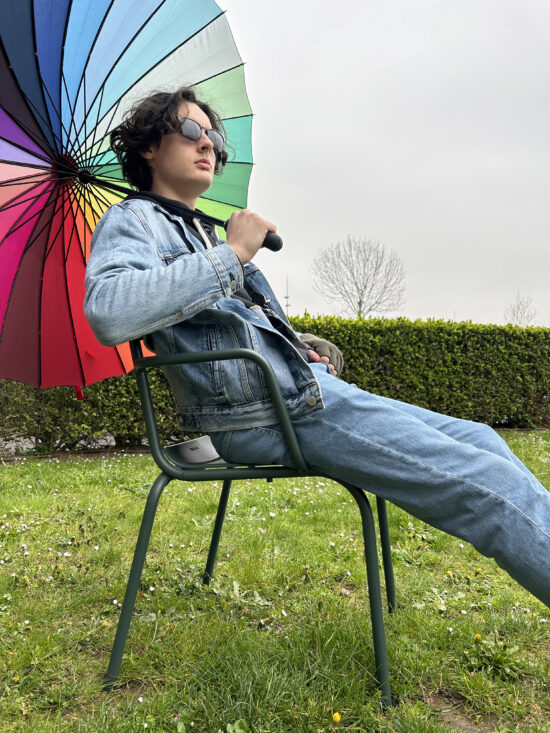





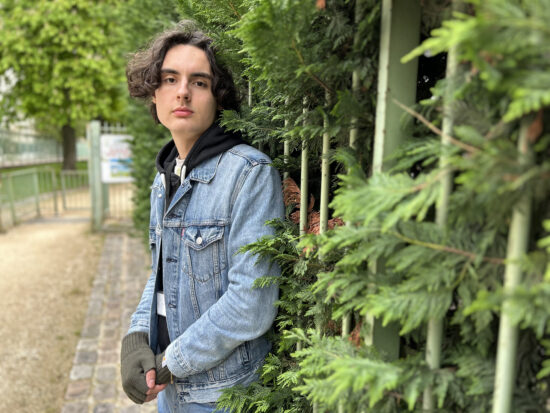




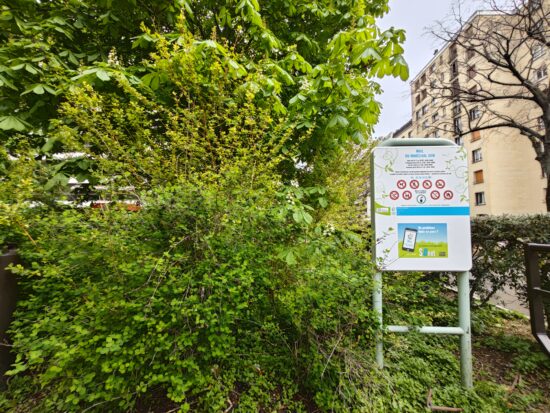

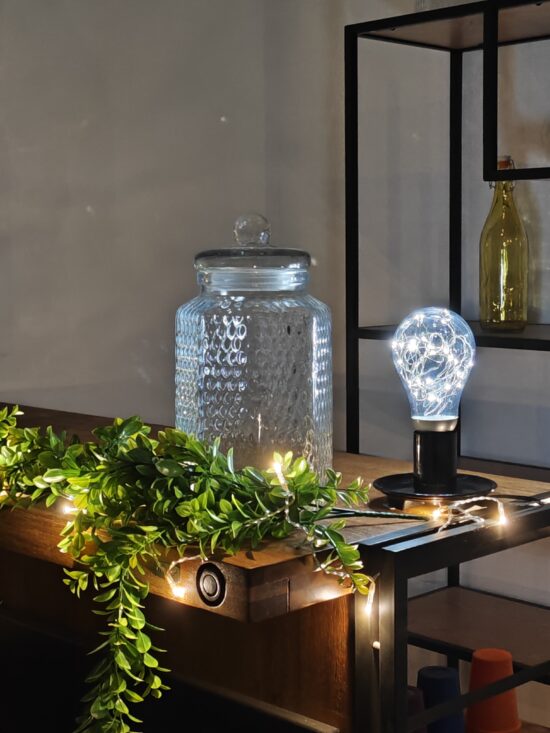






DXOMARK encourages its readers to share comments on the articles. To read or post comments, Disqus cookies are required. Change your Cookies Preferences and read more about our Comment Policy.